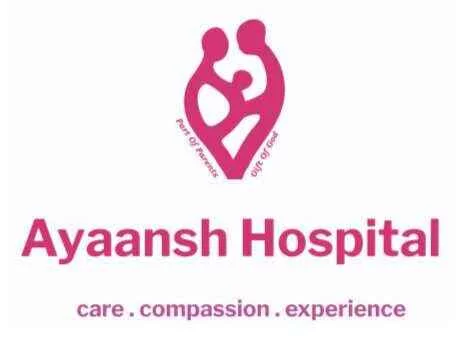Addressing Menstrual Disorders in Adolescents
Navigating adolescence is already challenging, but when menstrual disorders come into play, it can add an extra layer of stress, discomfort, and confusion for young girls. Menstrual disorders are quite common among adolescents and range from issues like painful cramps and heavy bleeding to irregular cycles and even missed periods. For many, these issues aren’t just a minor inconvenience—they can impact physical health, emotional well-being, and even social lives.
In this guide, we’ll explore the different types of menstrual disorders that affect adolescents, discuss potential causes, and go over some ways to address and manage these issues. The goal is to offer some clarity on a topic that can feel overwhelming for both adolescents and their caregivers, providing guidance on when to seek medical help and what treatment options might be available.
Common Menstrual Disorders in Adolescence
For adolescents, the first few years of menstruation can be a time of adjustment as their bodies settle into a regular cycle. However, some menstrual issues may indicate a disorder that needs medical attention. Here are some of the most common menstrual disorders affecting adolescents:
1. Dysmenorrhea (Painful Periods)
Dysmenorrhea, or painful periods, is perhaps the most common menstrual disorder among adolescents. The pain ranges from mild discomfort to severe cramps that can interfere with daily activities, such as school or social events. Dysmenorrhea can be categorized into two types:
– Primary Dysmenorrhea: This type of pain is caused by the natural production of prostaglandins, hormones that trigger contractions in the uterus. It typically occurs with the onset of menstruation.
– Secondary Dysmenorrhea: This involves pain caused by an underlying medical condition, such as endometriosis or pelvic inflammatory disease (PID). This type of dysmenorrhea tends to intensify over time.
Symptoms of Dysmenorrhea include:
– Intense cramping in the lower abdomen and lower back
– Nausea or vomiting
– Fatigue or headaches
While mild pain can often be managed with over-the-counter medication, persistent or severe pain may require medical evaluation.

2. Amenorrhea (Absence of Menstrual Periods)
Amenorrhea is another menstrual disorder characterized by the absence of menstrual periods. It can be divided into:
– Primary Amenorrhea: When a girl has not started menstruating by age 15 or hasn’t developed other signs of puberty by 13.
– Secondary Amenorrhea: When a girl who has previously had regular periods suddenly stops menstruating for three or more months.
Causes of Amenorrhea:
– Hormonal imbalances
– Conditions like Polycystic Ovary Syndrome (PCOS)
– Eating disorders, excessive exercise, or significant stress
– Underlying medical conditions like thyroid disorders or congenital abnormalities
If left untreated, amenorrhea can lead to complications, such as bone density loss, hormonal imbalances, and reproductive health issues.

3. Menorrhagia (Heavy Menstrual Bleeding)
Menorrhagia, or heavy menstrual bleeding, can be overwhelming for adolescents. In addition to being physically taxing, menorrhagia can lead to issues like anemia if not addressed. While all periods involve some bleeding, menorrhagia is characterized by an excessive flow or bleeding that lasts for more than seven days.
Symptoms of Menorrhagia:
– Frequent changing of pads or tampons, often more than every two hours
– Passing large blood clots
– Experiencing fatigue or dizziness (signs of anemia)
Conditions like hormonal imbalances, PCOS, or blood clotting disorders can cause heavy bleeding, and early treatment is crucial to avoid long-term health impacts.
4. Oligomenorrhea (Infrequent Menstrual Periods)
Oligomenorrhea is defined by infrequent periods that occur more than 35 days apart. Irregular cycles can be common in the first few years of menstruation, but persistently infrequent periods may indicate an underlying issue, such as a hormonal imbalance or PCOS.
Oligomenorrhea is often seen in adolescents who are under significant stress, physically active in intense sports, or have dietary habits that may not support healthy hormone levels.
5. Premenstrual Syndrome (PMS) and Premenstrual Dysphoric Disorder (PMDD)
While PMS is common, some adolescents experience symptoms severe enough to interfere with daily life. PMDD, a more severe form of PMS, can lead to intense mood swings, irritability, depression, and physical symptoms.
Symptoms of PMS and PMDD:
– Mood swings, irritability, or anxiety
– Physical symptoms like bloating, breast tenderness, and fatigue
– Disruptive impact on social and academic life
Causes of Menstrual Disorders in Adolescents
Menstrual disorders don’t just occur randomly—there are several factors that can contribute to these issues. Understanding these potential causes can help caregivers and healthcare providers develop effective treatment strategies.
1. Hormonal Imbalances
During adolescence, the body undergoes significant hormonal changes. It can take time for the hypothalamic-pituitary-ovarian axis, which regulates reproductive hormones, to stabilize. Hormonal fluctuations can lead to irregular cycles, heavy bleeding, or even the absence of menstruation altogether.
2. Polycystic Ovary Syndrome (PCOS)
PCOS is one of the most common causes of menstrual irregularities in adolescents. It’s a hormonal disorder that can lead to irregular periods, excessive hair growth, acne, and ovarian cysts. In addition to affecting menstruation, PCOS can impact a girl’s metabolic health and may require long-term management.
3. Eating Disorders and Nutritional Deficiencies
Adolescents who struggle with eating disorders, such as anorexia or bulimia, are at a higher risk of menstrual irregularities due to nutritional deficiencies and hormonal imbalances. An inadequate intake of essential nutrients, especially in young athletes, can also lead to issues like amenorrhea.

4. Stress and Lifestyle Factors
Stress can have a profound effect on menstrual health. Adolescents who experience high levels of stress from school, social pressure, or family issues may notice irregular cycles or missed periods. Additionally, lifestyle factors like excessive exercise or inadequate sleep can disrupt the hormonal balance, affecting menstruation.
5. Underlying Medical Conditions
Some menstrual disorders in adolescents may be linked to underlying medical conditions. Disorders like thyroid dysfunction, diabetes, and congenital abnormalities can all impact menstrual health. Endometriosis, although rarer in adolescents, is another condition that can cause severe menstrual pain and irregular cycles.
Why Addressing Menstrual Disorders Early is Important
Many young girls may view menstrual discomfort as something they simply have to tolerate, but addressing these issues early can make a big difference. Here’s why early diagnosis and intervention matter:
– Physical Health: Untreated menstrual disorders can lead to complications, such as anemia (from heavy bleeding), bone density loss (from amenorrhea), or long-term hormonal imbalances.
– Emotional Well-being: Menstrual issues can impact a young girl’s mental health, affecting her self-esteem and social life. Conditions like PMDD can lead to severe emotional distress, underscoring the need for support.
– Fertility Concerns: Some menstrual disorders, if left untreated, can have implications for future fertility. Early diagnosis can help manage conditions that may affect reproductive health later in life.
Treatment Options for Menstrual Disorders in Adolescents
There are a range of treatment options available for menstrual disorders, and each approach can be tailored to meet the unique needs of an adolescent. Here’s a look at some effective treatment options:
1. Lifestyle Adjustments
For some menstrual disorders, simple lifestyle changes can have a significant impact. Eating a balanced diet rich in vitamins and minerals, ensuring adequate sleep, managing stress, and incorporating moderate exercise can help regulate menstrual cycles and alleviate symptoms like cramps or bloating.

2. Medications and Hormonal Therapy
Nonsteroidal anti-inflammatory drugs (NSAIDs), such as ibuprofen, are often used to manage menstrual pain. For more severe conditions, hormonal therapies like birth control pills may be prescribed to regulate cycles, reduce heavy bleeding, or alleviate symptoms associated with PCOS or PMDD.
3. Counseling and Support
For adolescents dealing with the emotional aspects of menstrual disorders, counseling can be invaluable. A mental health professional can provide tools to manage stress, build self-esteem, and navigate the social challenges that come with these conditions.

4. Surgical Interventions
In rare cases, surgical options like laparoscopy may be considered, especially for adolescents diagnosed with endometriosis or other structural abnormalities. Surgery is usually a last resort and only recommended when other treatments have not been effective.
When to Seek Medical Help
While mild menstrual discomfort can often be managed at home, certain symptoms warrant medical attention:
– Severe pain: Pain that disrupts daily activities or doesn’t respond to over-the-counter medication.
– Heavy bleeding: Bleeding that lasts more than seven days or requires frequent pad changes every hour.
– Missed periods: Absence of menstruation for three consecutive months or more, especially if the girl has previously had regular cycles.
– Significant emotional distress: Intense mood swings, irritability, or anxiety around menstruation.
Conclusion
Menstrual disorders in adolescents are not just a phase to “get through”—they are medical issues that deserve attention and understanding. Early diagnosis and treatment of menstrual disorders can make a profound difference in a young girl’s quality of life, empowering her to manage her health and well-being effectively.


